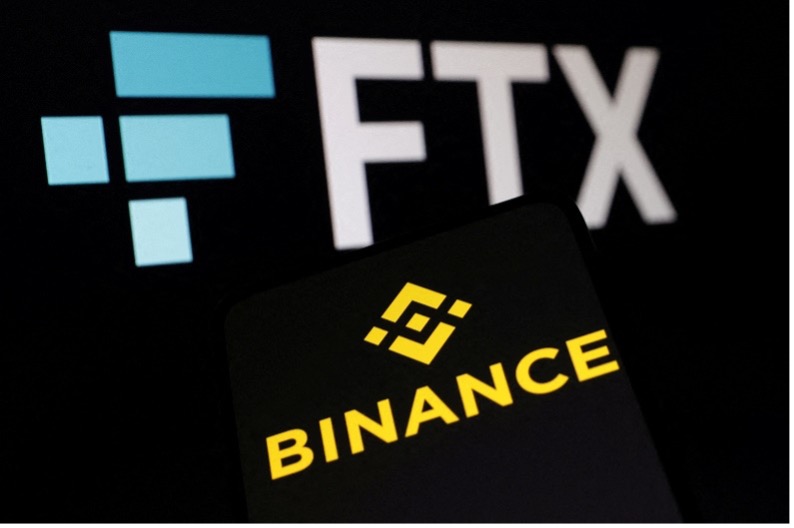Strict regulation, crypto consolidation, and the potential collapse of most US Dollar-pegged tokens could all be in the offing.

The purpose of this article is not to describe in detail how FTX has collapsed, nor decry Changpeng Zhao’s business practices, or even to consider the possibility of subterfuge behind the scenes.
All of this and more will be covered in excruciating detail by major publications over the coming days. Right now, what’s important for crypto investors is to consider the aftereffects.
And while it may not seem it right now, long-term, they may prove beneficial for the wider crypto world.
Three lessons from the collapse of FTX
1. Regulation is now inevitable
A key battleground between crypto developers and exchanges, and state regulators such as the SEC, has been bringing crypto investing within the scope of regulatory control. An important aspect of this has been the SEC’s desire to define crypto as securities and to bring digital assets under its purview. LBRY was just the first step, and despite the legal setbacks XRP was potentially set to be the second.
But the collapse of FTX — the second largest crypto exchange in the world — could mean regulation is now inevitable. Bloomberg has estimated that the company is now worth a single dollar, collapsing from a $32 billion dollar valuation in less than 24 hours.
Binance has walked away from any rescue deal, citing ‘mishandled customer funds and alleged US agency investigations.’ And this level of annihilation has the potential to infect contagion of confidence in the wider global economy.
Of course, while the SEC will almost certainly investigate FTX, it could also be caught in the crossfire for either refusing or choosing not to do so earlier.

FTX’s collapse — whether you blame the Alameda scandal, bank run, or potentially CZ manipulation — means that millions of crypto investors have most likely lost their entire funds, including all crypto and fiat. Add in the wider crypto crash, and in particular Solana which FTX held in large quantities, and the need for regulation now dwarfs the argument that it will stifle innovation.
As a minimum, exchanges will be required to show that client fiat funds are held in segregated accounts, while crypto may need to be stored in cold wallets despite their impracticality. For context, Coinbase retail client funds are still not segregated.
Or in the vernacular: not your keys, not your coins.
2. Crypto consolidation by use case will accelerate
There are more than 12,000 cryptocurrencies, but realistically, the vast majority of people would struggle to name even one outside of the top 100 on coinmarketcap.
Use cases aren’t particularly hard to understand; different tokens purport to offer individually useful applications. Bitcoin is often cited as a store of value akin to gold, Ethereum as the blockchain for metaverse building, Cardano for smart contracts and so forth.
However, in an echo eerily reminiscent of the dot-com crash, for every use case, there will soon be room for only one cryptocurrency. While this had seemed an inevitable outcome before FTX’s collapse, the exchange’s demise could see the decimation of crypto likely to accelerate, and only those with the best tech and most loyal base will survive.
A similar story could happen with the major crypto exchanges. FTX wasn’t the start — Celsius and Three Arrows already fell earlier this year. And when regulation comes knocking, the number of exchanges is likely to fall further. The upshot will be more control in the hands of Zhao — an interesting outcome given Binance’s 2017 beginnings in China, a country which has banned crypto outright.
3. Investigation into US dollar-pegged tokens
US dollar-pegged tokens have already been marked as unsafe by IMF head Kristalina Georgieva, who suggested those not backed by assets are a ‘pyramid’ after TerraUSD and Luna collapsed in May, wiping billions off the wider crypto market.

Now regulators could go in for the kill. Dollar-pegged cryptoassets have been a particularly galling development as some attempt to exploit the reputation of the secure world currency to gain investor confidence in a decentralized, unregulated, and unbacked asset.
These include USD coin, Binance USD, TrueUSD, Dai, Pax Dollar, Ampleforth, and Synthetix. Some offer returns of over 10% per year, a not dissimilar percentage to that offered by Bernie Madoff during his Ponzi era. These are not realistic returns without significant risk being undertaken, which will now in all likelihood be investigated.
In August, JP Morgan noted that stablecoins held $80 billion of short-term US government debt, or 2% of the total market for US treasury bills, at the time a higher proportion than Berkshire Hathaway.
There could be a further earthquake coming for the sector.
This article has been prepared for information purposes only by Charles Archer. It does not constitute advice, and no party accepts any liability for either accuracy or for investing decisions made using the information provided.
Further, it is not intended for distribution to, or use by, any person in any country or jurisdiction where such distribution or use would be contrary to local law or regulation.
